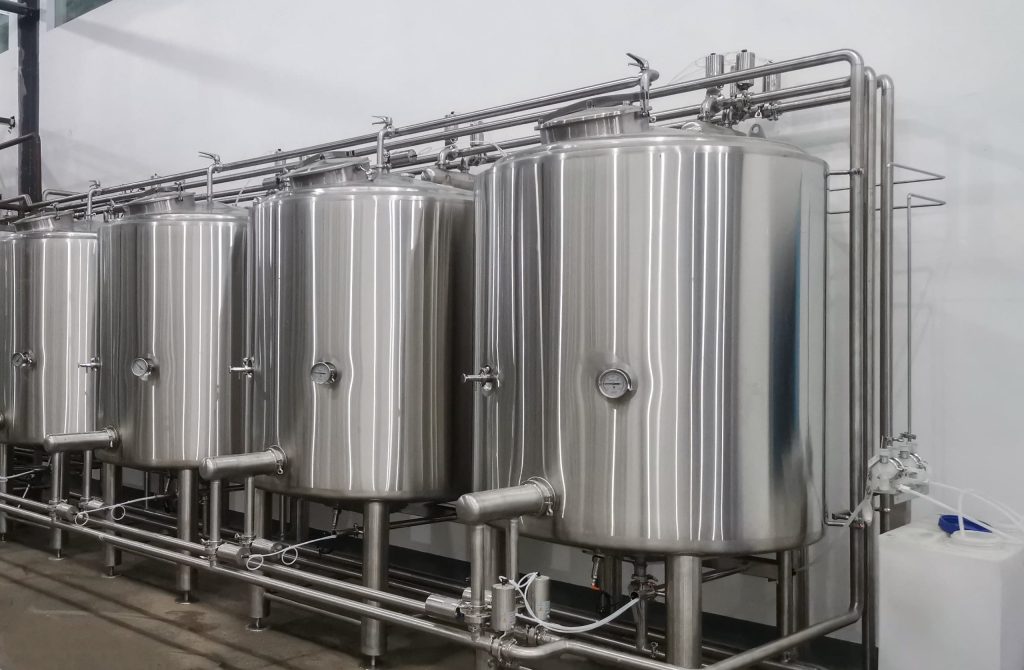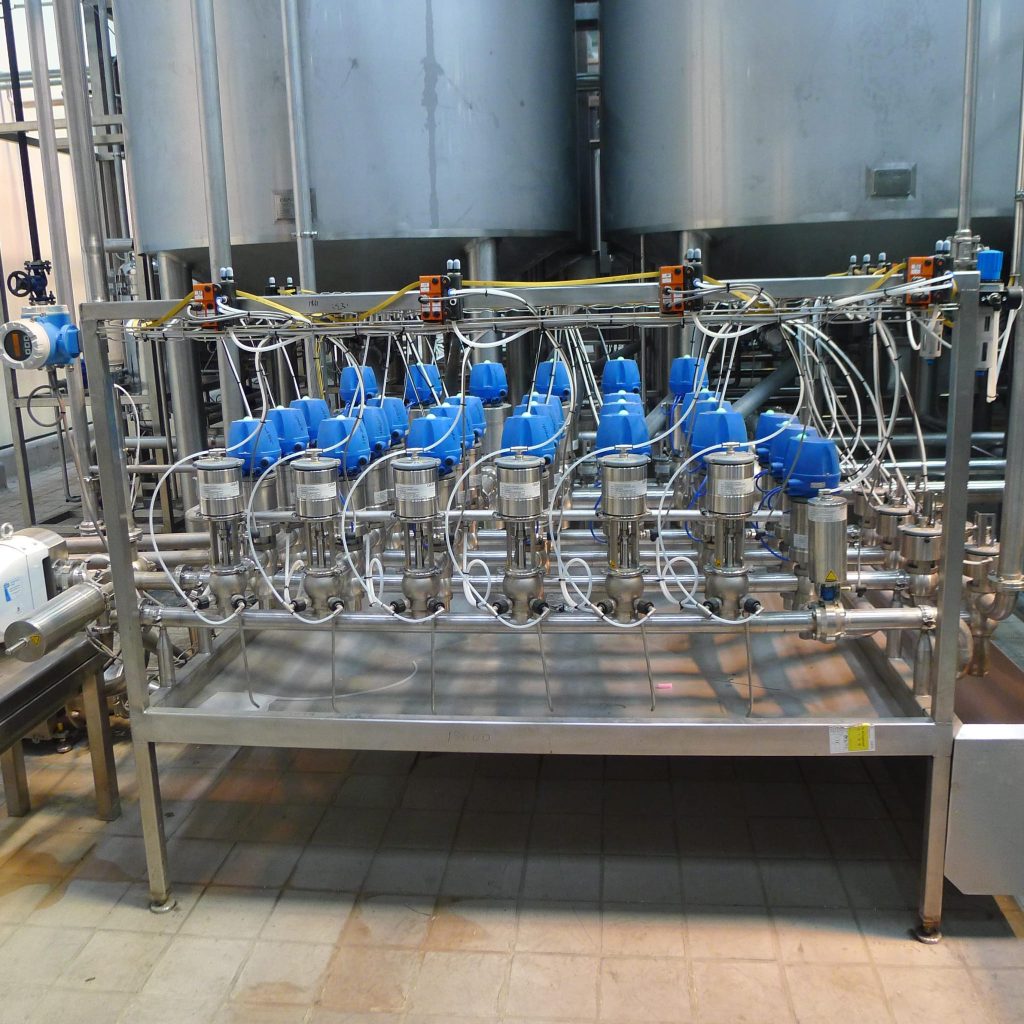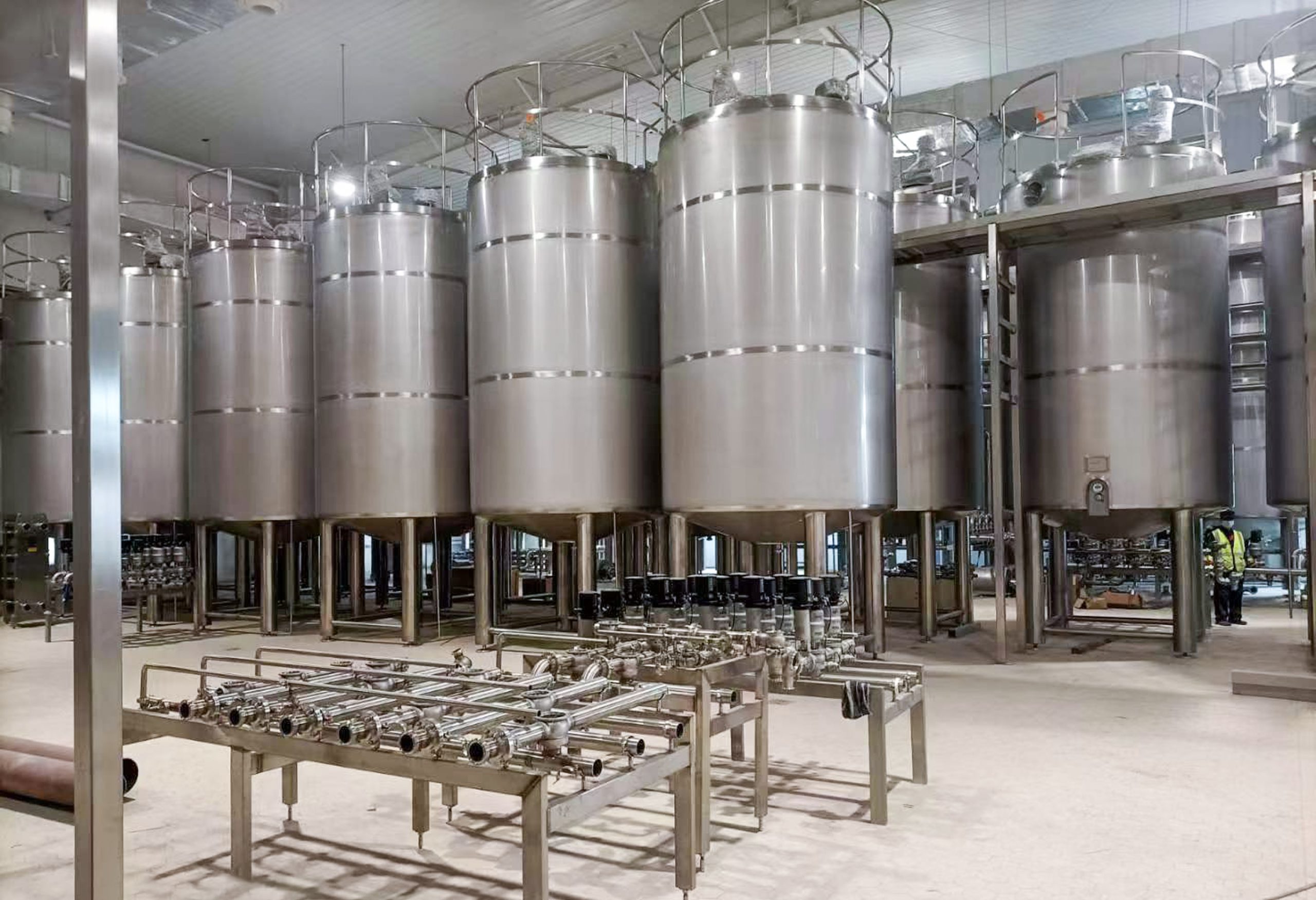Einführung

Clean-in-Place-Lösungen (CIP) sind für die Einhaltung von Hygienestandards in verschiedenen Branchen unverzichtbar, insbesondere in der Lebensmittel-, Getränke- und Pharmabranche. Diese automatisierten Systeme ermöglichen die effiziente Reinigung von Geräten, ohne dass diese auseinandergebaut werden müssen, was zu einer höheren Produktivität und Einhaltung von Gesundheitsvorschriften führt. In diesem Blog untersuchen wir die umfassende Kosten-Nutzen-Analyse von CIP-Systemen und untersuchen ihre Vorteile, Herausforderungen und praktischen Anwendungen. Am Ende werden die Leser ein klares Verständnis davon haben, wie sich CIP-Lösungen auf die Betriebseffizienz und Kosteneinsparungen auswirken können.
Verständnis Clean in Place (CIP)
What is Clean in Place?
Clean in Place (CIP) is a sophisticated cleaning methodology that allows for the sanitization of equipment and piping without the need for manual disassembly. Clean in Place processes are typically automated and follow a systematic series of steps, including pre-rinsing, chemical cleaning, rinsing, and final sanitization. This approach not only ensures cleanliness but also optimizes resource usage, making it a cornerstone of modern manufacturing and processing industries.
Schlüsselkomponenten eines CIP-Systems
A typical CIP system includes several key components:
- CIP Solution Tanks: These tanks store the cleaning and sanitizing solutions, which may include alkaline cleaners, acids, and sanitizers.
- Pumps and Valves: Essential for circulating cleaning solutions through the system, these components ensure efficient flow and pressure.
- Wärmetauscher: Many CIP processes utilize heated solutions to enhance cleaning effectiveness, particularly in removing organic residues.
- Steuerungssysteme: Automation is integral to CIP; control systems monitor and regulate the cleaning process to ensure compliance with set parameters.
By integrating these components, CIP systems provide a reliable method for maintaining hygiene standards while minimizing downtime.
Vorteile von Clean in Place Systeme
Time Efficiency
One of the most significant advantages of CIP systems is the substantial time savings they offer. Traditional cleaning methods often require extensive manual labor and lengthy equipment disassembly. In contrast, CIP systems can complete cleaning cycles in a fraction of the time. For instance, a CIP system may reduce the cleaning time from hours to just 30 minutes, allowing for quicker turnaround between production runs and increased overall productivity.
Consistency and Effectiveness
CIP systems deliver consistent and effective cleaning results. By automating the cleaning process, organizations can ensure that every piece of equipment receives the same level of sanitation. This consistency is critical for maintaining product quality and safety. For example, in the food industry, even minor inconsistencies in cleaning can lead to contamination, product recalls, and significant financial loss.
Reduzierte Arbeitskosten
With the implementation of CIP systems, companies can achieve considerable reductions in labor costs. Automation minimizes the need for manual cleaning, enabling staff to focus on other essential tasks. This reduction in labor not only decreases direct cleaning costs but also lessens the burden of labor-related issues, such as training and retention.
Water and Chemical Savings
Modern CIP systems are designed to optimize the use of water and cleaning chemicals. By recirculating cleaning solutions and using precise measurements, organizations can significantly lower their operational costs. For instance, a well-implemented CIP system can reduce water usage by up to 50%, leading to substantial savings on utility bills and a lower environmental footprint.
Factors Influencing Costs
Several factors influence the overall costs associated with Clean in Place systems:
- Size of Operation: Larger facilities often require more extensive and complex CIP systems, leading to higher initial costs. The scale of operations directly impacts both the investment and the potential savings.
- Type of Industry: Different industries have unique cleaning requirements. For example, the pharmaceutical industry may demand more stringent cleaning protocols than the food industry, affecting system complexity and cost.
- Einhaltung gesetzlicher Vorschriften: Companies in regulated industries must adhere to strict cleaning standards, which can necessitate more advanced CIP solutions. Compliance requirements often dictate the level of investment needed to ensure operational legitimacy.
Implementation Challenges
Technical Difficulties
Implementing a Clean in Place system is not without its challenges. Organizations may face various technical difficulties, such as:
- Integration with Existing Systems: Many companies operate with legacy systems that may not easily integrate with new CIP technologies, leading to additional costs and delays.
- Customization Needs: Every operation is unique, and CIP systems may need customization to address specific cleaning challenges, complicating implementation.
- Maintenance of Complex Systems: Maintaining a CIP system can be complex, requiring specialized knowledge and skills that may not be readily available within the existing workforce.
Employee Training and Adaptation
Employee training is another significant challenge when implementing a Clean in Place system. Staff must be adequately trained to operate the new system effectively. A comprehensive training program is essential for smooth operation and maximizing the benefits of CIP. Ongoing education and skill development are crucial to ensure that personnel can adapt to the evolving technology and processes involved.
Measuring the Success of Clean in Place Lösungen
Key Performance Indicators (KPIs)
To evaluate the success of a Clean in Place system, organizations should monitor several key performance indicators (KPIs). These metrics help determine whether the CIP system is meeting its intended goals:
| KPI | Beschreibung |
|---|---|
| Reinigungszeit | Time taken to complete a cleaning cycle |
| Chemische Verwendung | Amount of chemicals used per cycle |
| Labor Hours | Total labor hours required for cleaning |
| Compliance Rate | Rate of compliance with sanitation standards |
| Equipment Downtime | Time equipment is non-operational due to cleaning |
By regularly tracking these KPIs, businesses can identify areas for improvement and ensure that the CIP system is functioning optimally.
Continuous Improvement
Ongoing analysis and adaptation are critical to maintaining an effective Clean in Place system. Regular audits and updates can lead to further cost savings and efficiency improvements. Continuous monitoring of KPIs allows organizations to pivot quickly when issues arise, ensuring that CIP systems are always aligned with operational goals.
Case Studies of Successful KVP Implementations
Case Study 1: Beverage Industry
In a large beverage plant, the implementation of a CIP system resulted in significant operational improvements. The company reported a:
- 30% reduction in cleaning time, allowing for increased production capacity and faster turnaround between batches.
- 25% decrease in labor costs, freeing up staff for other essential tasks and reducing overtime expenses.
- Significant improvement in product quality, leading to fewer customer complaints and enhanced brand reputation.
This case demonstrates how effective CIP systems can lead to both tangible and intangible benefits in a competitive market.
Case Study 2: Pharmaceutical Industry

A pharmaceutical company faced stringent FDA regulations regarding cleanliness and sanitation. After implementing a CIP system, the company experienced:
- Increased compliance with FDA regulations, resulting in smoother audits and fewer penalties.
- Reduction in cross-contamination incidents, which is critical in maintaining product integrity and consumer safety.
- Improved overall efficiency of cleaning processes, allowing for more time dedicated to production activities.
This example illustrates the critical role that CIP systems can play in highly regulated industries.
Abschluss
The cost-benefit analysis of Clean in Place solutions reveals substantial advantages that often outweigh initial investment costs. By increasing efficiency, ensuring compliance, and reducing labor and material costs, CIP systems can be a game-changer for many industries. Despite the challenges associated with implementation, the long-term benefits typically justify the transition to automated cleaning solutions. Businesses that invest in CIP technology not only improve their operational efficiency but also enhance product quality and safety, positioning themselves for sustained success in their respective markets.
Häufig gestellte Fragen
F: Was ist Clean in Place (CIP)?
A:Clean in Place is an automated cleaning process that allows for the sanitation of equipment without disassembly. It is designed to enhance operational efficiency while maintaining strict hygiene standards.
Q:What are the main benefits of using CIP systems?
A:CIP systems offer several key benefits, including time efficiency, consistency in cleaning results, reduced labor costs, and savings in water and chemicals. These advantages collectively contribute to enhanced operational effectiveness.
Q:What challenges may arise during KVP implementation?
A:Challenges can include technical difficulties with system integration, the need for customization, and the requirement for employee training to ensure proper system operation.
Q:How can the success of a CIP system be measured?
A:The success of a CIP system can be measured using various key performance indicators (KPIs) such as cleaning time, chemical usage, labor hours, compliance rates, and equipment downtime.
Q:Is CIP suitable for all industries?
A:While CIP is most commonly used in food and pharmaceutical industries, its applicability varies by specific needs and regulatory requirements. Industries with stringent hygiene standards are typically the most suitable candidates for CIP systems.
Q:What is the potential return on investment for CIP-Systeme?
A:Many businesses report significant savings over time, often realizing up to a 30% reduction in overall cleaning costs. This ROI demonstrates the financial viability of investing in CIP technologies.

